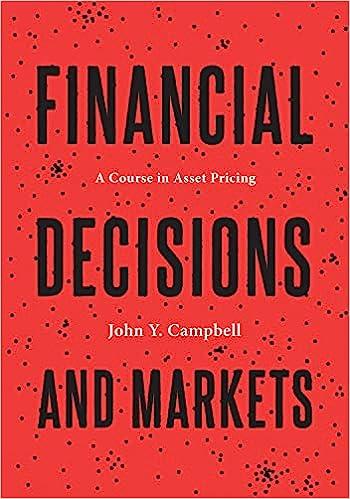Answered step by step
Verified Expert Solution
Question
...
1 Approved Answer
21. Joan filed her unextended 2020 tax return on November 15, 2021, paying the $5,000 amount due at that time. Joan has no reasonable cause



 21. Joan filed her unextended 2020 tax return on November 15, 2021, paying the $5,000 amount due at that time. Joan has no reasonable cause for failing to file the return by October 15 or for failing to pay the tax that was due on April 15, 2021. Compute the failure-to-pay and failure-to-file penalties. wat ers X $210) partnership return is 1-1b Failure to Pay Tax Ifa taxpayer fails to pay either a tax that is shown on his or her return or an assessed deficiency within 10 days of an IRS notice and demand, a failure-to- pay penalty is imposed. The 10-day period becomes 21 days when the tax due is less than $100,000. The penalty is 0.5 percent of the required liability, after adjusting for any prior increases to l percent of the underpaid tax per month after notice and demand is issued by This penalty does not apply if the failure to pay is attributable to a reasonable cause or to the failure to pay an estimated tax for which there is a different penalty, For this purpose, reasonable cause is defined in a manner that is identical to that dis- cussed in conjunction with the failure-to-file penalty except that, if an individual is granted an automatic filing extension, reasonable cause is presumed to exist provided that the bal- ance due does not exceed 10 percent of the total tax." The failure-to-file penalty is reduced by the 0.5 percent failure-to-pay penalty for any month in which both apply. Thus, no more than a 5 percent total (nonfraud) penalty typically can be assessed against a taxpayer for any month. Nonetheless, after rendering sufficient notice to the taxpayer, the IRS can assess both the failure-to-pay and the failure- to-file penalties. A taxpayer can avoid the failure-to-file penalty if an extension of the return's due date is granted by the IRS. With the two exceptions just discussed, however, the failure-to-pay penalty is imposed when the total amount of the tax is not paid by the unextended due date of the return failing to file the return by October 15 or for failing! pute the failure-to-pay and failure-to-file penalties. 21. Joan filed her unextended 2020 tax return on November 15, 2021, paying the $5,000 amount due at that Ume. Joan has no reasonable cause for failing to file the return by October 15 or for failing to pay the tax that was due on April 15, 2021. Compute the failure-to-pay and failure-to-file penalties. following situations
21. Joan filed her unextended 2020 tax return on November 15, 2021, paying the $5,000 amount due at that time. Joan has no reasonable cause for failing to file the return by October 15 or for failing to pay the tax that was due on April 15, 2021. Compute the failure-to-pay and failure-to-file penalties. wat ers X $210) partnership return is 1-1b Failure to Pay Tax Ifa taxpayer fails to pay either a tax that is shown on his or her return or an assessed deficiency within 10 days of an IRS notice and demand, a failure-to- pay penalty is imposed. The 10-day period becomes 21 days when the tax due is less than $100,000. The penalty is 0.5 percent of the required liability, after adjusting for any prior increases to l percent of the underpaid tax per month after notice and demand is issued by This penalty does not apply if the failure to pay is attributable to a reasonable cause or to the failure to pay an estimated tax for which there is a different penalty, For this purpose, reasonable cause is defined in a manner that is identical to that dis- cussed in conjunction with the failure-to-file penalty except that, if an individual is granted an automatic filing extension, reasonable cause is presumed to exist provided that the bal- ance due does not exceed 10 percent of the total tax." The failure-to-file penalty is reduced by the 0.5 percent failure-to-pay penalty for any month in which both apply. Thus, no more than a 5 percent total (nonfraud) penalty typically can be assessed against a taxpayer for any month. Nonetheless, after rendering sufficient notice to the taxpayer, the IRS can assess both the failure-to-pay and the failure- to-file penalties. A taxpayer can avoid the failure-to-file penalty if an extension of the return's due date is granted by the IRS. With the two exceptions just discussed, however, the failure-to-pay penalty is imposed when the total amount of the tax is not paid by the unextended due date of the return failing to file the return by October 15 or for failing! pute the failure-to-pay and failure-to-file penalties. 21. Joan filed her unextended 2020 tax return on November 15, 2021, paying the $5,000 amount due at that Ume. Joan has no reasonable cause for failing to file the return by October 15 or for failing to pay the tax that was due on April 15, 2021. Compute the failure-to-pay and failure-to-file penalties. following situations




Step by Step Solution
There are 3 Steps involved in it
Step: 1

Get Instant Access with AI-Powered Solutions
See step-by-step solutions with expert insights and AI powered tools for academic success
Step: 2

Step: 3

Ace Your Homework with AI
Get the answers you need in no time with our AI-driven, step-by-step assistance
Get Started



